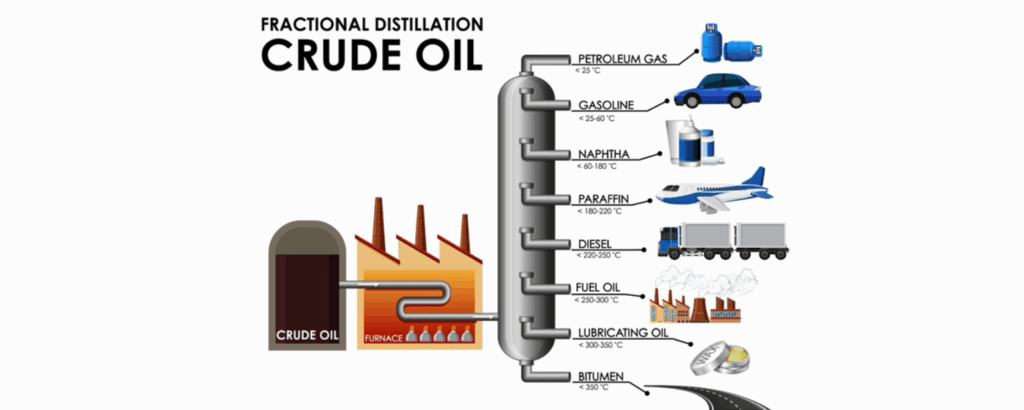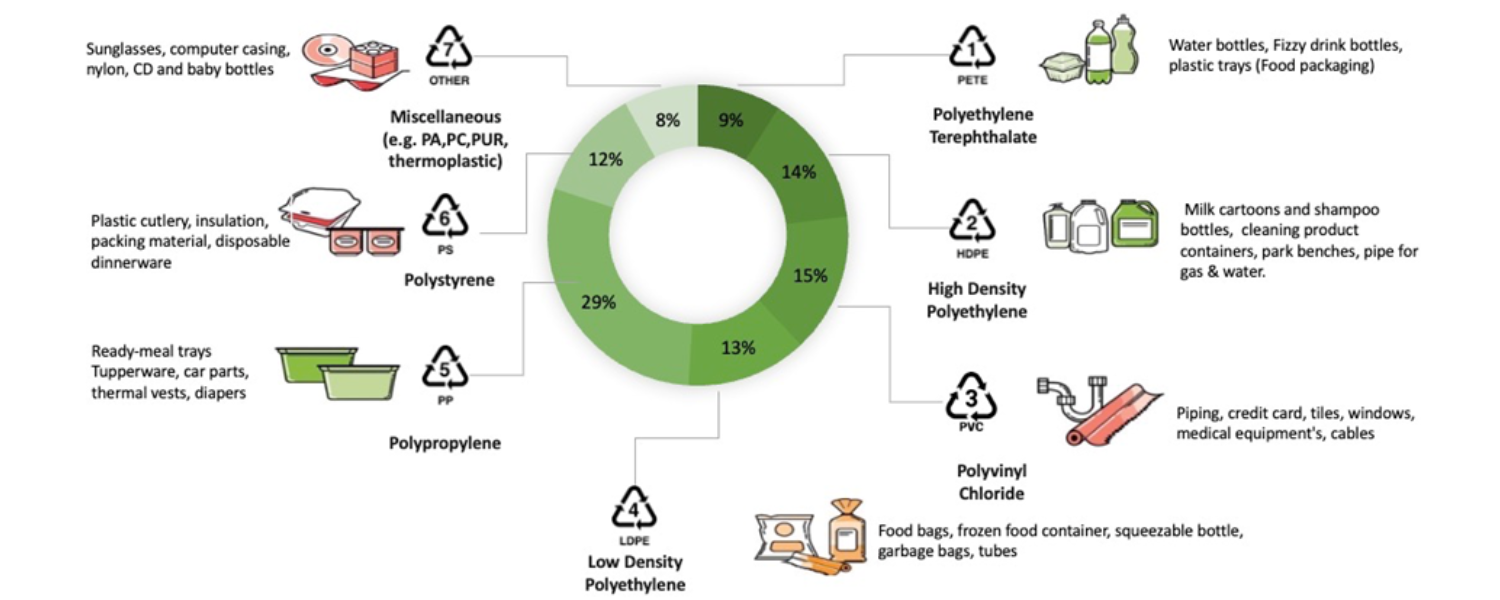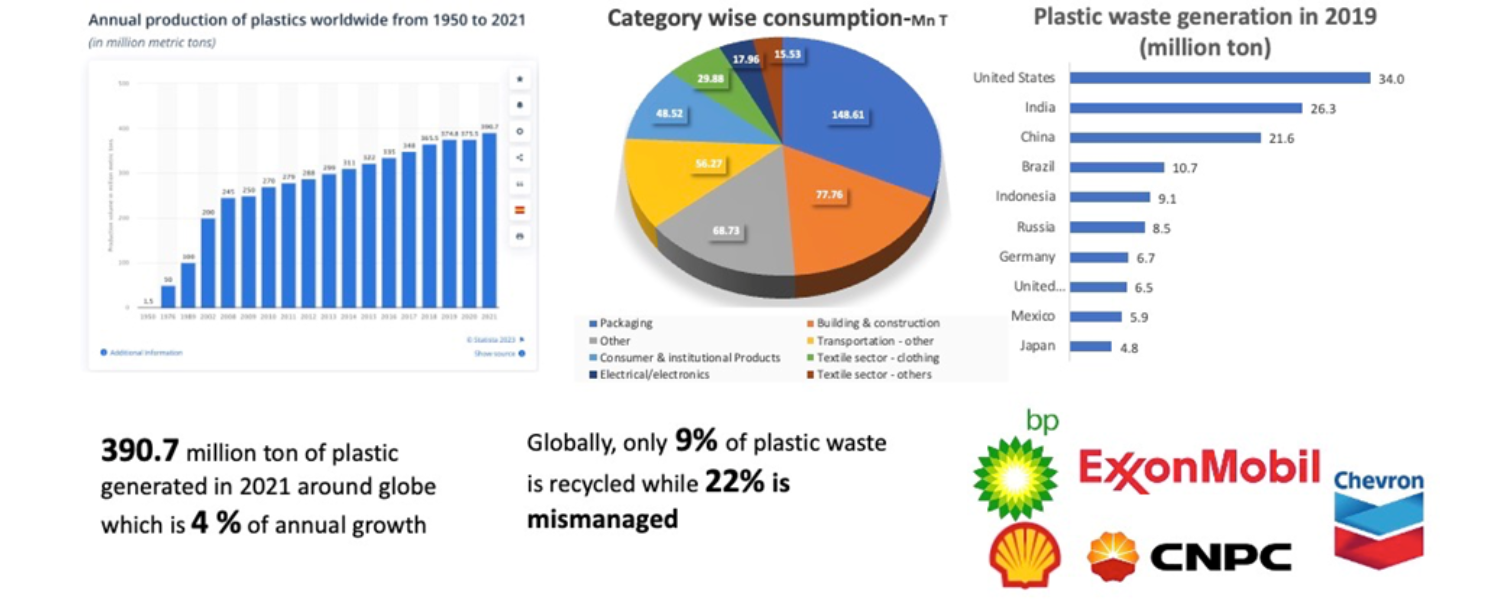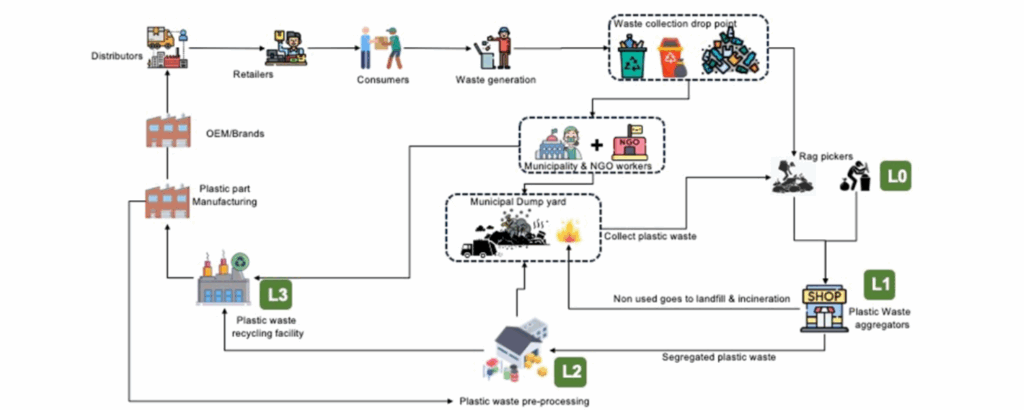
Plastics- they are everywhere. From water and juice bottles to the packaging that protects our food, it’s today an integral, almost indispensable, part of our modern lives. but this convenience comes with a significant cost, one that is increasingly evident in our environment. Let’s delve into the world of plastic, its journey, and the crucial need for effective waste management.
What exactly is plastic?
At its core, plastic is a man-made material derived from polymer-long chain of molecules produced mainly from petrochemicals. These polymers give plastic its unique characteristics. With its lightweight, durable and mouldable properties, plastic has revolutionized industries and become an essential part of modern life. From packaging and construction to healthcare and electronics, plastic’s presence is virtually inescapable.
How plastic is manufactured: From Crude oil to Everyday use
The journey of plastic begins with crude oil, through a refining process called fractional distillation:
Fractional Distillation (as illustrated in the diagram provided), various components are separated based on their boiling points. A key substance extracted during this process is naphtha.
This hydrocarbon mixture then undergoes a process of “cracking,” where its molecules are broken down into essential components like ethylene and propylene, which are the building blocks for many kinds of plastics. These small monomer molecules then undergo a polymerization process, joining together to form long chains, thereby creating polymers, which are plastics.
This entire manufacturing process, while efficient, is heavily reliant on fossil fuels and contributes significantly to carbon emissions.

This entire process, while efficient, is heavily reliant on fossil fuels and contributes significantly to carbon emissions.
Types of Plastic
Not all plastics are created equal. They possess different properties and are used for diverse applications, as illustrated in the chart provided here:

Why Plastic is a growing problem?
Despite its numerous benefits, plastic has rapidly become a global environmental concern. The core of the problem lies in its persistence:
Limited Recycling Effectiveness: Globally, over 90% of plastic is not effectively recycled. As statistics show, only 9% of plastic waste is recycled, while a significant 22% is mismanaged.
- Non-Biodegradable Nature: Plastic takes an incredibly long time to decompose completely, often requiring 500-1000 years. Instead of biodegrading, plastic breaks down into smaller and smaller pieces known as microplastics.
Release of Toxic Chemicals: During their breakdown, plastics can release toxic chemicals into the ecosystem. These substances, such as phthalates and BPA, can leach into soil and water, posing potential risks to ecosystems and human health.
Plastic Statistics: Global and Indian Perspective
These numbers highlight the escalating scale of the plastic problem:
Global statistics
- Annual plastic production worldwide has steadily increased from around 1.5 million tons in 1950 to 390.7 million tons in 2021. This represents an annual growth of approximately 4% which in global terms is huge.
- In 2019, the United States was the top plastic waste generator (34.0 million tons), followed by India (26.3 million tons) and China (21.6 million tons).
- Packaging accounts for the largest category of plastic consumption (148.61 Mn T), followed by building & construction (77.76 Mn T) and consumer & institutional products (68.73 Mn T).

Indian Statistics:
- India generated 3.46 Million Tons (Mn T) of plastic waste in 2021-22, increasing to 4.12 Mn T in 2022-23.
- Of the total waste managed in India, 46% is mismanaged, 36% goes to landfills, 13% is recycled, and 4% is incinerated. This indicates a significant gap in effective waste management.
- Maharashtra alone generated 0.31 Mn T in 2020-21, with 81% collection and 64% recycling of collected plastic waste (273K T). Pune City contributes approximately 400 Metric Tons of plastic waste per day.
- The top states for plastic waste generation include Telangana (12%), Tamil Nadu (10%), and West Bengal (10%).

The Far-Reaching Impact of Plastic Mismanagement
Improper disposal of plastic waste has widespread and severe consequences:
Environmental Pollution: It clogs rivers, pollutes oceans, and degrades soil quality. Large accumulations of plastic form gyres in oceans, posing a long-term threat to marine ecosystems.
Threat to Wildlife: Wildlife often mistake plastic for food, leading to internal injuries, blockages, starvation, and death. Animals can also become entangled in plastic debris.
Human Health Concerns: Microplastics have made their way into our food and water systems. While the full extent of their impact is still being studied, concerns exist regarding their potential to carry toxins and disrupt biological processes in humans.
Contribution to Climate Change: Additionally, plastic waste incineration releases significant amounts of greenhouse gases, contributing to climate change and air pollution.
Key challenges in plastic waste management:
Despite widespread awareness about the impact of plastic waste on human health and the environment, the problem continues to grow. This indicates that there are fundamental challenges in effective waste management:
Lack of Segregation at Source: A major hurdle is the insufficient separation of different waste types at the household or commercial level, contaminating recycling streams.
Inefficient Recycling Infrastructure: Many regions lack the necessary facilities and technology for large-scale, efficient sorting and processing of various plastic types.
Consumer Behaviour and Awareness: A gap often exists between public awareness and actual responsible disposal habits.
Informal Sector Exploitation: While the informal sector (rag pickers) plays a crucial role in waste collection, it often lacks safety standards, fair wages, and proper integration into formal systems.
Low Value of Recycled Plastic: The cost of virgin plastic is frequently lower than that of recycled plastic, making it economically less attractive for industries to use recycled materials.
Multi-layered and Composite Plastics: These materials, often used in food packaging, are made of multiple types of plastic or plastic combined with other materials, making them extremely difficult and costly to recycle.
Government measures: Regulations and Initiatives:
Recognizing the urgency of the plastic crisis, the Indian government has introduced several key policies and initiatives:
- Plastic Waste Management Rules (2016, amended 2022): These rules mandate Extended Producer Responsibility (EPR), making producers responsible for the collection and recycling of their plastic waste after consumers use it.
- Ban on Single-Use Plastics (2022): This significant step restricts the manufacture, import, stocking, distribution, sale, and use of various single-use plastic items like straws, plates, cups, and wrapping films.
- Swachh Bharat Abhiyan: A nationwide cleanliness campaign that promotes proper waste segregation and disposal practices.
- PM Gati Shakti & CPCB EPR Portal: These initiatives support traceability and digitization in waste management, aiming for more efficient monitoring and compliance.
Responsible ways to manage and reduce Plastic waste:
The solution lies in collective responsibility and a shift in behaviour. We can adopt the principles of the “5 Rs”:
- Reduce: Choose reusable items over disposables (e.g., reusable water bottles, coffee cups, shopping bags) to minimize overall plastic consumption.
- Reuse: Repurpose containers, bags, and bottles whenever possible, extending their lifespan before disposal.
- Recycle: Diligently follow government and local guidelines for effective recycling, ensuring plastics are clean and correctly sorted to avoid contamination.
- Refuse: Say no to unnecessary plastic packaging, single-use items, and products that come with excessive plastic.
- Redesign: Support innovation in sustainable packaging and product design that prioritizes durability, recyclability, and the use of alternative materials.
Circular economy in plastic waste management.
Moving beyond the linear “take-make-dispose” model, a circular economy approach aims to keep plastic materials in the value chain for as long as possible. This involves a holistic framework, as depicted in the diagram provided, where resources are continuously reused and recycled.
Key aspects include:
- Designing for Recyclability: Products are engineered from the outset to be easily recycled or reused at the end of their life.
- Effective Collection Systems: Implementing robust collection infrastructure (like waste collection drop points and municipal efforts) to ensure plastic waste is captured and diverted from landfills.
- Promoting Recycling: Investing in and utilizing both mechanical and chemical recycling processes to convert plastic waste back into valuable raw materials. This includes roles for waste aggregators and plastic recycling facilities.
- Upcycling and Innovation: Exploring creative ways to upcycle plastic into new, higher-value products and considering waste-to-energy options for non-recyclable plastic, though recycling remains the preferred hierarchy.
- Integration of Informal Sector: A well-designed circular economy system integrates informal sectors like rag pickers into the formal waste management chain, improving efficiency and working conditions.

Conclusion
Plastic itself is not the villain—it is how we use and dispose it that determines its impact. With increasing awareness, significant policy reforms, and continuous technological advancements, we now possess the tools to fundamentally rethink our relationship with plastic. By embracing responsible consumption practices and committing to a circular economy model, we can transition from linear ‘use-and-throw’ models to sustainable systems that safeguard our planet for future generations. Let’s all contribute to a plastic-free and sustainable future.
